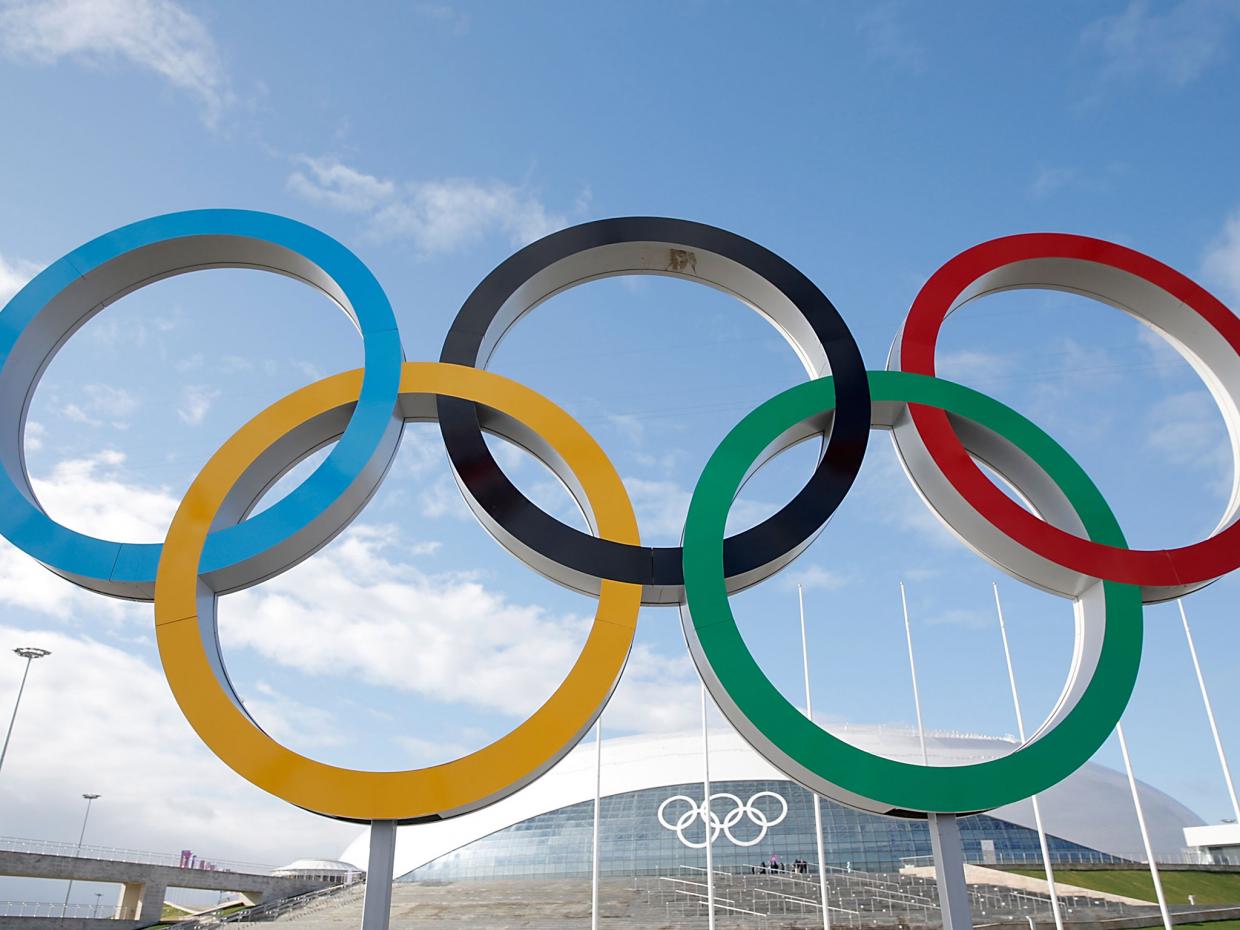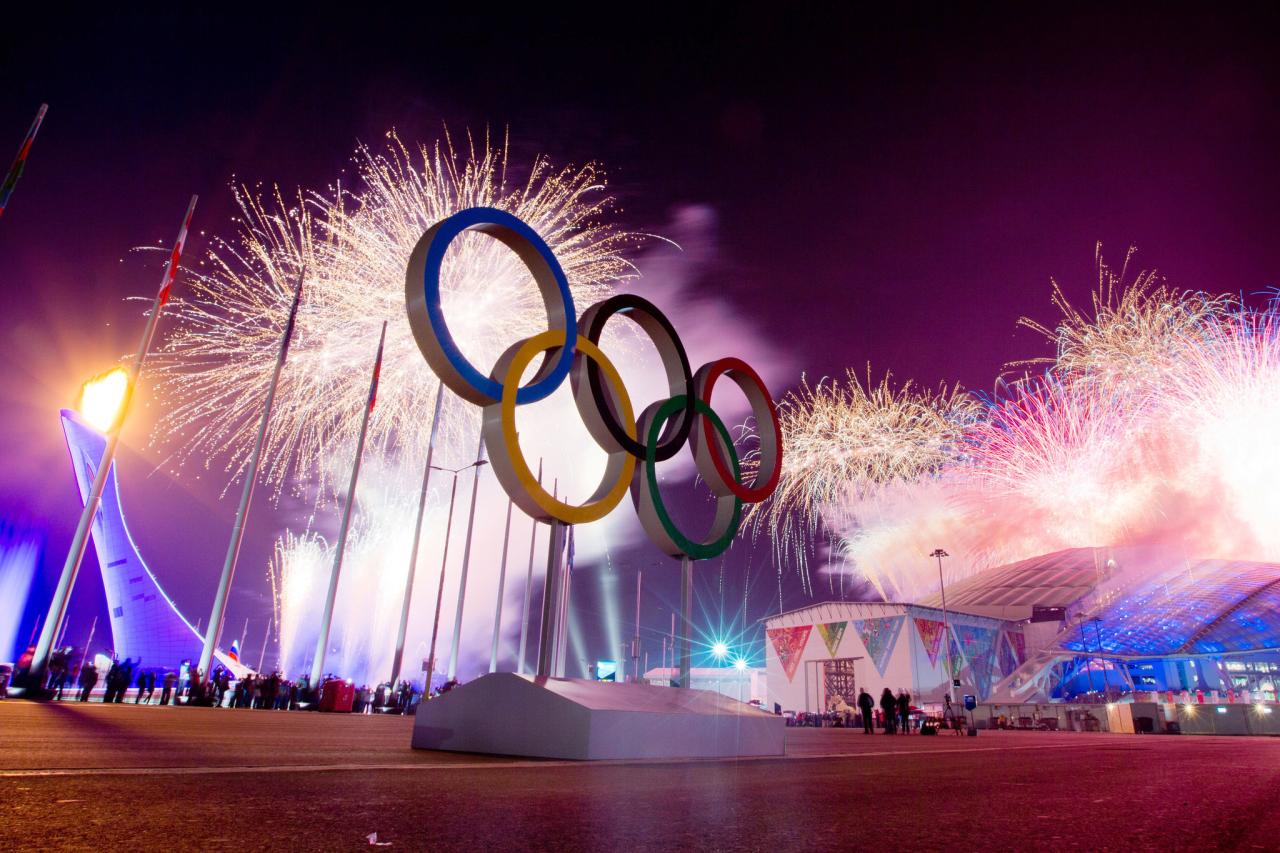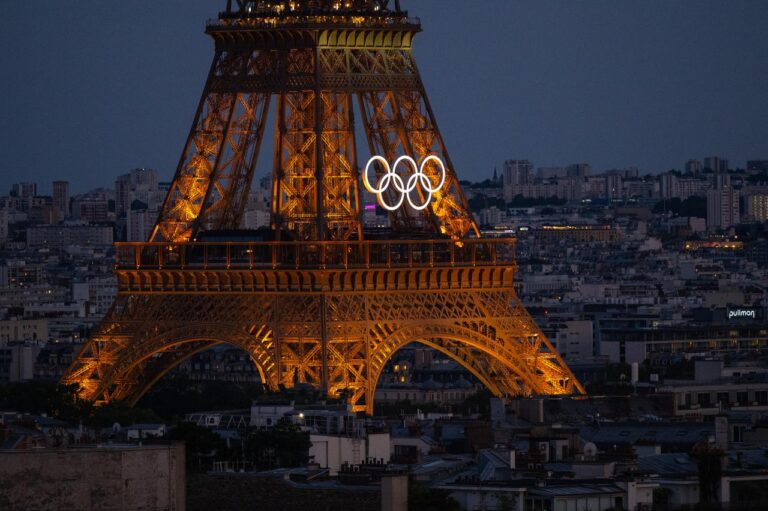The Olympic Games stand as the pinnacle of athletic achievement, a quadrennial global spectacle where dreams are forged, shattered, and ultimately, realized. For countless athletes worldwide, the mere thought of representing their nation on this grand stage ignites a deep-seated passion and an unwavering commitment to excellence. The journey to the Olympics is not merely a path; it is a grueling odyssey demanding years of sacrifice, relentless training, profound mental fortitude, and an unyielding belief in one’s potential. This article delves into the intricate facets of this extraordinary quest, exploring the multifaceted challenges and triumphs that define the lives of Olympic hopefuls. We will examine the rigorous selection processes, the scientific underpinnings of elite performance, the psychological resilience required, and the profound societal impact of these aspiring champions.
Childhood Aspirations and Early Development

Every Olympic dream begins with a spark, often ignited in childhood. For many, it’s a fascination with a particular sport, a revered athlete, or the sheer allure of the Olympic spirit itself. This initial spark transforms into a burning ambition through consistent engagement and early success.
Key Stages in Early Athletic Development:
- Introduction to Sport: Many future Olympians are introduced to their sport at a young age, often through local clubs, school programs, or family influence. The emphasis at this stage is typically on fun, fundamental skill acquisition, and fostering a love for the activity. It’s about developing basic motor skills, coordination, and a general athletic foundation.
- Specialization and Progression: As talent emerges, athletes often begin to specialize in their chosen discipline. This involves more structured training, often under the guidance of specialized coaches. Competitions become more serious, and the focus shifts towards refining technique and improving performance metrics. This is where natural aptitudes begin to differentiate athletes.
- Regional and National Recognition: Successful athletes start to gain recognition at regional and then national levels. This often leads to invitations to elite training camps, national development squads, and participation in international junior competitions. This exposure provides valuable experience and a glimpse into the demands of high-level competition.
- Mentorship and Role Models: Throughout their formative years, young athletes often look up to established Olympians and senior athletes as role models. These figures provide inspiration, guidance, and a tangible example of what it takes to reach the highest level. Mentorship from experienced coaches and former athletes can also be invaluable in navigating the complexities of the athletic journey.
- Family Support and Sacrifice: The unwavering support of family is paramount. Parents often make significant financial, time, and logistical sacrifices to facilitate their child’s athletic development, from driving to early morning practices to funding equipment and travel to competitions. This collective effort forms the bedrock of an athlete’s pursuit.
Training Regimens and Scientific Advancements
The path to Olympic qualification is paved with sweat, dedication, and an increasingly sophisticated application of sports science. Training is no longer just about brute force; it’s a meticulously planned, scientifically informed process.
Components of Elite Olympic Training:
- Periodized Training Cycles: Elite athletes follow highly structured periodized training plans that involve varying intensity and volume over specific cycles (macrocycles, mesocycles, microcycles). This allows for peak performance at major competitions while also preventing overtraining and facilitating optimal recovery. The plan often incorporates phases of general preparation, specific preparation, pre-competition, and competition.
- Sport-Specific Skill Development: A significant portion of training is dedicated to refining the specific technical skills required for their sport. This includes endless repetitions, detailed video analysis, and constant feedback from coaches to perfect movements, timing, and execution. For example, a swimmer will focus on stroke mechanics, a gymnast on precision landings, and a weightlifter on explosive technique.
- Strength and Conditioning: Olympic hopefuls undergo rigorous strength and conditioning programs tailored to the demands of their sport. This can include resistance training, plyometrics, core stability exercises, and flexibility work. The goal is to build power, endurance, and injury resilience. The strength program for a sprinter will differ significantly from that of a marathon runner, for instance.
- Nutritional Science and Hydration: Diet plays a critical role in performance and recovery. Athletes work with sports nutritionists to develop personalized meal plans that provide optimal energy, support muscle repair, and maintain overall health. Hydration strategies are also meticulously managed to prevent dehydration, which can severely impair performance. The timing and composition of meals and supplements are precisely controlled.
- Recovery Protocols: Adequate recovery is as crucial as training itself. Athletes utilize various recovery methods, including active recovery, massage, foam rolling, cryotherapy, hydrotherapy, and sufficient sleep. The science of recovery has advanced significantly, recognizing its vital role in preventing injury and optimizing adaptation to training loads. Monitoring heart rate variability (HRV) and sleep patterns has become common practice.
- Technological Integration and Biomechanics: Modern training incorporates advanced technology such as GPS trackers, wearable sensors, power meters, and high-speed cameras. Biomechanical analysis helps coaches and athletes identify efficiencies and inefficiencies in movement patterns, allowing for precise adjustments to technique. This data-driven approach provides objective insights into performance.
Psychological Fortitude and Resilience
Beyond the physical prowess, the mental strength of an Olympic hopeful is arguably the most defining characteristic. The pressure, the setbacks, and the sheer magnitude of the dream demand extraordinary psychological resilience.
Key Aspects of Mental Preparation:
- Goal Setting and Visualization: Athletes set ambitious yet realistic goals, breaking them down into smaller, manageable steps. Visualization techniques, where athletes mentally rehearse successful performances, are widely used to enhance confidence and prepare for competitive scenarios. This mental rehearsal can often be as impactful as physical practice.
- Pressure Management: The Olympic stage brings immense pressure, both internal and external. Athletes develop strategies to cope with this pressure, including mindfulness, deep breathing exercises, and cognitive reframing to turn anxiety into positive energy. Learning to perform under duress is a critical skill.
- Coping with Setbacks and Injuries: Injuries and performance plateaus are inevitable. Olympic hopefuls must possess the mental toughness to navigate these setbacks, maintain a positive outlook during rehabilitation, and stay motivated to return stronger. This resilience is often what separates those who succeed from those who falter.
- Self-Belief and Confidence: An unwavering belief in one’s own ability is paramount. Athletes cultivate self-confidence through consistent positive self-talk, reviewing past successes, and focusing on their strengths rather than perceived weaknesses. A strong sense of self-efficacy is a powerful predictor of success.
- Focus and Concentration: In high-stakes environments, the ability to maintain laser-like focus and block out distractions is crucial. Athletes practice techniques to improve concentration, such as selective attention and routine development, ensuring they remain fully present in the moment of competition.
- Sports Psychology Support: Many elite athletes work with sports psychologists to develop these mental skills. These professionals help athletes manage stress, improve motivation, overcome performance anxieties, and build mental toughness, providing a critical support system that complements physical training.
Navigating Trials and Qualification
The journey to the Olympics culminates in a series of rigorous selection processes, often more nerve-wracking than the Games themselves. National Olympic Committees and individual sport federations have stringent criteria.
Paths to Olympic Qualification:
- Direct Qualification Standards: For many individual sports (e.g., track and field, swimming), athletes must achieve specific qualification times or distances set by international federations within a designated qualification window. These standards are typically very challenging, designed to ensure only the world’s best compete.
- National Trials and Championships: Even if an athlete meets international standards, they often still need to perform exceptionally well at their respective national trials or championships. Many countries have limited quotas for each event, meaning only the top finishers at these highly competitive domestic events will secure a spot. The pressure at national trials is immense, as years of effort often hinge on a single race or performance.
- Ranking Systems: In sports like tennis, golf, and some combat sports, Olympic berths are allocated based on world ranking points accumulated over a qualification period. Athletes must consistently perform well in international tournaments to secure a high enough ranking.
- Team Selection: For team sports (e.g., basketball, football, volleyball), national coaches and selection committees make discretionary decisions based on player performance, team chemistry, tactical fit, and experience. Athletes often compete fiercely for limited spots on the roster.
- Universality Places and Host Nation Quotas: To ensure broader global representation, some universality places are allocated to countries that might not otherwise qualify athletes. The host nation also typically receives a certain number of automatic qualification spots across various sports.
- Managing Peak Performance: The challenge for athletes and coaches is to ensure they peak at precisely the right time – not too early, not too late – for their Olympic trials or the qualification window. This requires precise planning and execution of their training cycles.
The Broader Impact of Inspiring Nations and Driving Innovation
Beyond the individual achievements, the pursuit of Olympic dreams has a profound impact on nations and the world at large.
Societal and Global Influences:
- National Pride and Unity: Olympic hopefuls, and ultimately Olympians, become symbols of national pride. Their efforts and successes unite populations, fostering a sense of shared identity and celebration, particularly during the Games themselves. The feeling of watching your country’s flag raised is incomparable.
- Inspiration for Youth Participation: The visibility of Olympic athletes inspires countless young people to engage in sports, promoting healthy lifestyles and potentially unearthing future talent. Role models demonstrating dedication and achievement can significantly influence participation rates at grassroots levels.
- Economic Impact and Sponsorship: The journey to the Olympics often involves significant financial investment, both from the athletes themselves and from sponsors, national sporting bodies, and government funding. Successful athletes attract lucrative endorsements, contributing to the sports economy. Major events like the Olympics also generate enormous economic activity for host cities.
- Technological and Scientific Advancement: The relentless pursuit of marginal gains in elite sports drives innovation in sports science, engineering, and technology. Breakthroughs in materials science for equipment, advances in sports medicine, and refined training methodologies often trickle down to benefit amateur athletes and the general public.
- Global Diplomacy and Cultural Exchange: The Olympic Games, and the journey to them, foster an environment of international cooperation and cultural exchange. Athletes from diverse backgrounds come together, transcending political and cultural differences through the shared language of sport. It is a powerful platform for soft diplomacy.
- Promoting Values: The Olympic movement champions values such as excellence, friendship, and respect. Athletes embodying these principles inspire society to strive for similar virtues in their own lives. The stories of sportsmanship, perseverance, and triumph against adversity resonate deeply.
Acknowledging the Demands
While the glory of the Olympics is widely celebrated, the immense personal sacrifices made by hopefuls often remain unseen. The road to glory is fraught with challenges and difficult choices.
Common Sacrifices and Challenges:
- Financial Strain: Unless heavily sponsored, many Olympic hopefuls face significant financial strain. Training, travel, equipment, coaching, and medical care can be incredibly expensive. Many balance their athletic pursuits with part-time jobs or rely on family support.
- Social Isolation: The demanding training schedule often leads to social isolation. Athletes may miss out on social events, family gatherings, and traditional milestones enjoyed by their peers due to training commitments or competition schedules. Their social circle often shrinks to those within their sport.
- Academic and Career Compromises: Many aspiring Olympians defer or put their academic or professional careers on hold, dedicating their prime years to their sport. This can create uncertainty about their future beyond athletics. The challenge of balancing elite sports with academic pursuits is immense.
- Physical and Mental Burnout: The relentless intensity of training and competition can lead to physical exhaustion and mental burnout. Athletes must learn to manage stress, listen to their bodies, and take breaks to prevent long-term negative impacts on their health.
- Risk of Injury: Elite sports carry a high risk of injury, which can be devastating both physically and psychologically. Recovering from significant injuries requires immense patience, resilience, and often, extensive rehabilitation. A career can be ended in an instant.
- The Pressure to Perform: The constant pressure to perform, to meet expectations, and to justify years of effort can take a severe toll on an athlete’s mental well-being. The knowledge that a single missed performance could derail their Olympic dream creates immense psychological burden.
Life After the Olympic Dream

For those who reach the Olympics, and even those who fall short, the journey profoundly shapes their lives, opening new avenues and presenting new challenges.
Post-Olympic Journey:
- Transitioning from Elite Sport: Many athletes face a significant transition when they retire from elite competition. This involves adapting to a new routine, finding a new purpose, and often pursuing educational or career paths that were deferred.
- Leveraging Experience: Former Olympians often leverage their experiences, discipline, and leadership skills in new careers as coaches, motivational speakers, sports administrators, or in various other professions. Their unique journey provides them with invaluable life lessons.
- Advocacy and Philanthropy: Many athletes become advocates for their sport, mentors for younger generations, or engage in philanthropic work, using their platform to make a positive impact on society. They often inspire others long after their competitive careers end.
- Mental Health Challenges: The transition can also bring mental health challenges, including identity loss, depression, or anxiety. Support systems for athletes transitioning out of high-performance sport are increasingly recognized as vital.
- Lasting Legacy: Regardless of whether they win a medal, the indelible mark of having pursued an Olympic dream leaves a lasting legacy, not just for the individual but for their communities and nation. Their stories of dedication and perseverance continue to inspire.
The Future of Olympic Aspirations
The landscape of Olympic aspirations is constantly evolving, shaped by technological advancements, shifting global dynamics, and a growing emphasis on athlete well-being.
Trends Shaping the Future:
- Data-Driven Training and AI: The integration of artificial intelligence and advanced data analytics will become even more sophisticated, providing personalized training insights, injury prediction, and strategic advantages that were previously unimaginable. Every aspect of an athlete’s performance will be quantifiable.
- Individualized Wellness Programs: There will be a greater emphasis on holistic athlete wellness, encompassing not only physical health but also mental and emotional well-being, with tailored programs designed to optimize long-term health and prevent burnout. Sports psychology and psychiatry will become more mainstream.
- Technological Innovation in Equipment: Expect continued innovation in sports equipment and apparel, pushing the boundaries of human performance while adhering to ethical guidelines and ensuring fair competition. Material science will continue to revolutionize various sports.
- Global Accessibility and Diversity: Efforts to increase global accessibility to elite sports training and competition will continue, aiming to broaden the talent pool and ensure that athletes from all backgrounds have the opportunity to pursue their Olympic dreams. This includes initiatives to develop sports infrastructure in emerging nations.
- Sustainability in Sports: The Olympic movement, and the broader sports world, will likely place a greater emphasis on environmental sustainability, with a focus on eco-friendly practices in training, event hosting, and equipment manufacturing.
- New Sports and Disciplines: The Olympic program itself is dynamic, with new sports and disciplines being added to reflect evolving interests and engage new generations of athletes and fans. This constant evolution keeps the Games fresh and relevant.
Conclusion
The journey of an Olympic hopeful is a profound testament to the human spirit’s capacity for dedication, resilience, and aspiration. It is a narrative of unwavering commitment, scientific pursuit, and profound personal sacrifice, culminating in the dream of standing on the world’s most illustrious sporting stage. As the Olympic flame continues to burn, it lights the way for countless individuals who dare to dream big, pushing the boundaries of what is possible and inspiring us all.



